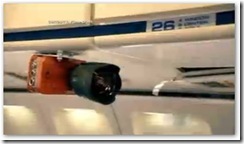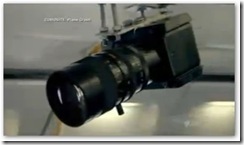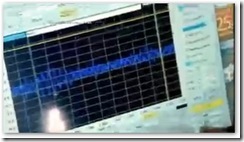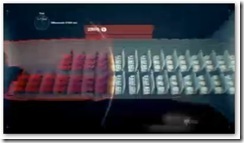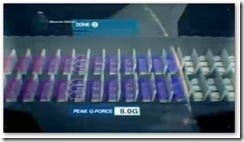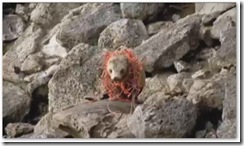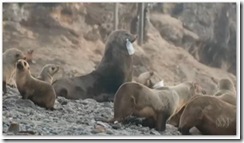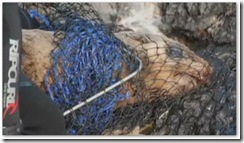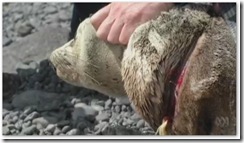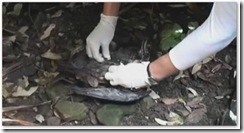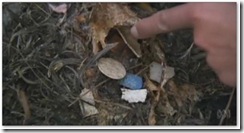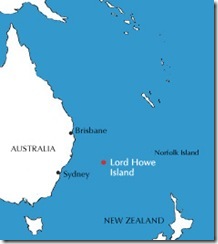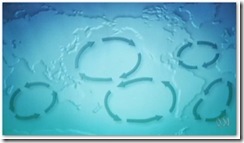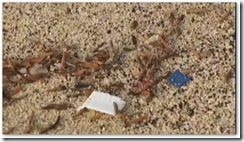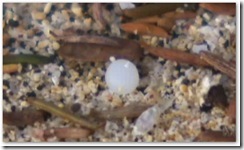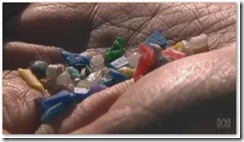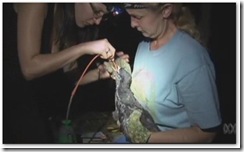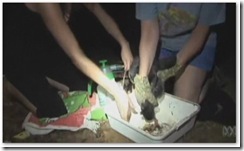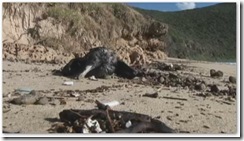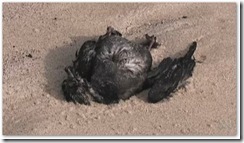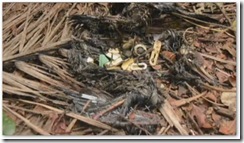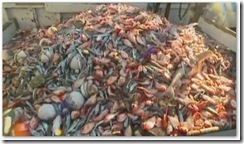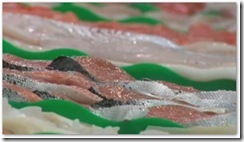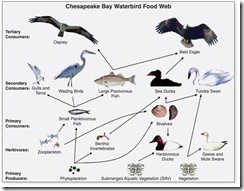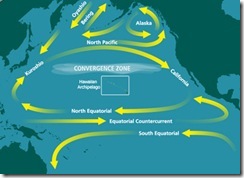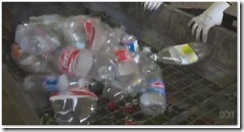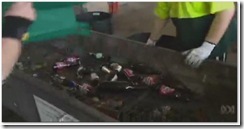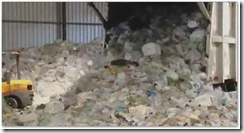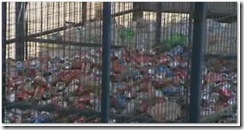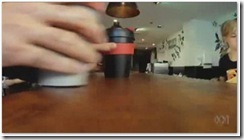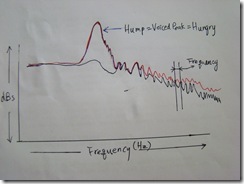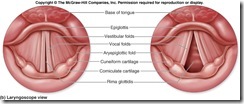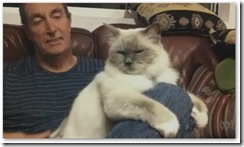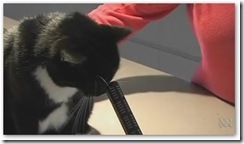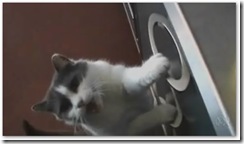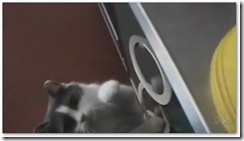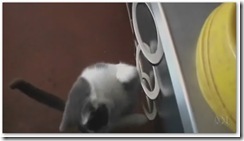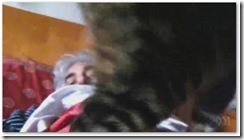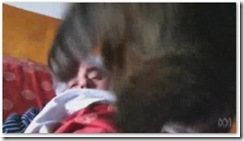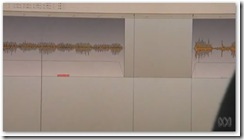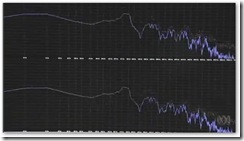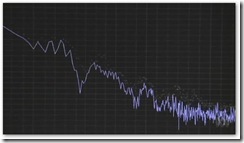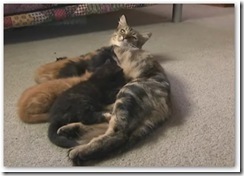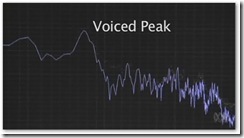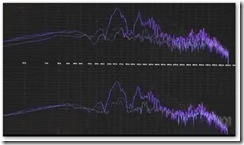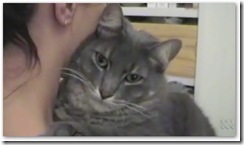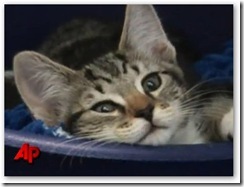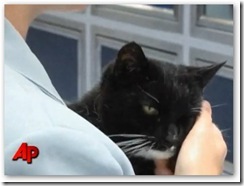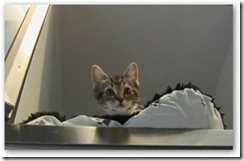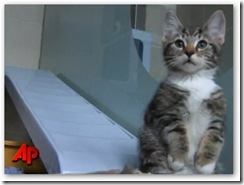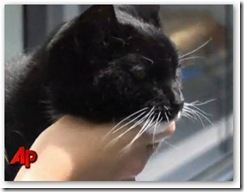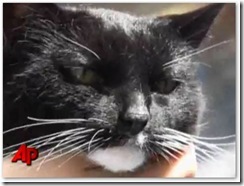-

Edward Wechner's patents
My husband Edward Wechner's work - 2011 version. ...
-

Chainless Biycle
Edward 愛看Tour d' France, 每次看到看到那些賽手因為 jamming the chain, 而lose the race又或跌倒甚至傷得很重! 這是他自此而很大願望設計出一款比chain drive 鏈條單車更可reliability賴性, 更安全safety, without losing performance and without increasing the weight of the bicycle, but also inprove the efficiency.. ...
-
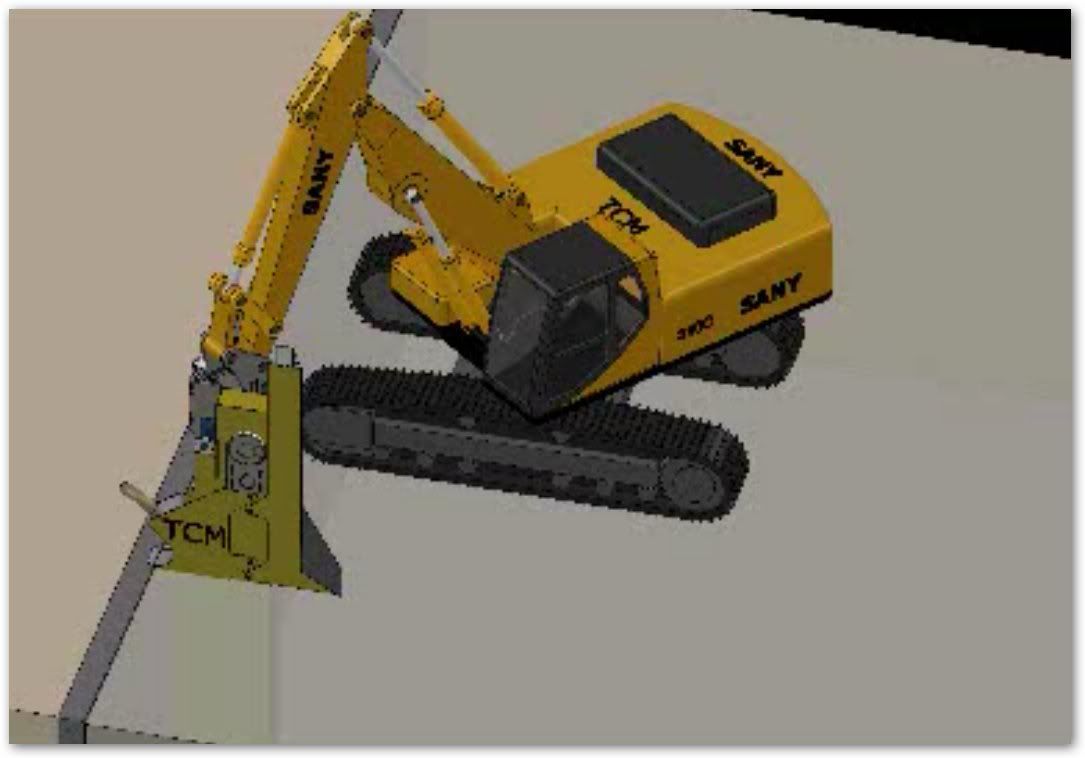
Trench Casting Machine
It does dig a trench 300mm wide and 6000mm deep and fills it with concrete simultaneously at an advance rate of 20m/hour...
-

solar power and terrestrial power
The world is desperately looking for alternative power sources in order to reduce greenhouse gases and with it save our planet. Opinions vary widely on what course we should take to achieve a more environmentally acceptable power source ...
-

2 22 2011 Christchurch Earthquake
在 4 日 9 月 2010 年, 紐西蘭的基督城發生了一次 7.1 magnitude earthquake. 那時才死了不到幾個人. 建築物也損害不太重(與今次6.3級地震相比). 於是, 地震後, 政府就開始重建了. 才不到半年(5 個月吧了) 就有了第二次的大地震. 2月22日2011, 這次只是 6.3 級地震. 可是死了123人226人失蹤(至今天2月26日為至). 成為了紐西蘭80年來最大的自然災難....
-

Bowerbirds
Bowerbirds 神奇之處是他們是天才建築師, 為了吸引女性, 他們會建一巢(請看圖), 外面加很多裝飾品(有石塊/水果/果實/花葉/汽水罐... 所有有顏色的東西), 而顏色的挑選完全是由男性認為什麼顏色可以吸引自己喜愛的女性, 而已這些個人口味完全是從遺傳因子而來的...
By NEAL KARLINSKY (@NealKarlinsky)
Oct. 1, 2012
前幾天在電視新聞上看到這個報導:
Discovery TV 用了50 萬買部波音727去撞沙漠, 當然是用假人去坐飛機.
去研究一下如果飛機墮毀, 最危險座位, 和什麼是安全操施之類....
研究發現:
1. 當然要全程繫好安全帶先, 我一向都不解安全帶, 只有放鬆少少的.
2. 出事, 立即 雙手抱頭, 彎低腰頸 (如圖), 撞毀模擬得知, 乘客沒這樣做會, 產生脊髓骨損傷。
3. 出事, 砰片, 硬物, 垃圾等等會周圍飛的, 如果沒雙手抱頭, 彎低腰頸, 反而坐得端正的, 好易被擊中而死的.
4. 出事, 不可手抱小孩, 因為沖力大, 媽不夠力量緊抱小孩, 反比小孩飛出, 如物件般撞死別人, 也撞死小孩.
5. 如果飛機是向前沖撞毀的, 一定坐最後排坐位, 生還的機會最高.
6. 無論什麼撞法, 一定是坐在EXIT 位附近最容易逃生, 當然是一發生意外, 愈早離開架機, 就愈好.
不過, 依他們所說, 根據MTI資料, 坐發達國家的飛機如美國, 日本, 愛爾蘭等的定期航班, 撞機的機會是, 1千4百萬分之1, 亦即去美國, 日本, 愛爾蘭的地方的話, 中獎機會不大的.
A test crash of a Boeing 727 in the Sonoran desert to learn more about what actually happens to passengers when a plane goes down found that simply bracing for impact could help save lives.
In one of the most ambitious tests ever undertaken in the name of airline safety, Discovery TV had a Boeing 727 equipped with more than a half a million dollars worth of crash test dummies, 38 specialized cameras and sensors, and a crew of incredibly daring pilots. The pilots, who'd donned parachutes, bailed out of a hatch in the back of the aircraft minutes before the huge jetliner careered into the ground in a horrific crash that tore the plane apart.
Staged last spring as part of the Discovery Channel's "Curiosity Plane Crash," the test crash was the result of four years of planning and consultations with a huge team of experts, all to better understand what happens to passengers when an aircraft goes down.
Cindy Bir, a professor of biomedical engineering at Wayne State University, took charge of the crash test dummies, examining them immediately after the the plane hit the desert to get an idea of what injuries might have been sustained.
" I suspect … one may have a concussion, one may have a broken leg," Bir said as she looked over the dummies.
Bir told ABC News that her data made it clear that bracing for impact -- placing one's head down and putting one's hands over one's head -- could increase the odds of survival.
During the crash, which was a belly flop done nose first, passengers near the front bore the brunt of the impact. Rows one through seven held the "fatal" seats -- seat 7A was catapulted straight out of the plane.
Many of the seat-belted dummies who weren't bent over in the bracing position incurred spinal injuries from jerking forward in their seat belts.
Bir also simulated a woman holding an infant on her lap -- a familiar one-seat money-saving move many parents opt for. After a relatively minor simulated impact, the mother could no longer hold on. Bir cautioned that holding a child on one's lap was not safe.
The test crash also revealed other aspects of plane crashes, such as the tremendous amount of debris that could prove deadly to any passenger sitting upright, and how important it was to be able to get out of the plane fast. Generally, sitting within five rows of an exit gave passengers the best odds.
An MIT study that drew on worldwide safety data from 2000 to 2007 found that the chance of dying on a scheduled flight in developed nations such as the United States, Japan or Ireland was one in 14 million. In other words, a passenger who took a single flight every day could on average go 38,000 years before dying in a plane crash.
Discovery's test findings offers some tips on how to perhaps improve those odds even further.
Referring to ABC Catalyst on 6 Sept 2012:
Summary:
1. plastic products are disposed off in the sea , we already known it has a serious impact on the ecology of the marine life .
2 . plastic products poison the human food chain.
3. some very interesting figures are show in this documentary :
a) It is estimated that fish in the North Pacific now consume up to 24,000 tonnes of plastic a year (imagine these fish will be consumed by us- humans!!) , however, the plastic itself is already poisonous from the manufacturing process, and when it floats around in the ocean by currents, it does collect a lot of dirt (contaminates), when animals eat it, it will leach out into the blood stream and is incorporated into the tissues.
b) 270 species worldwide are affected by marine debris, half of them are sea-birds.
c) the plastic found in one single sea-birds stomach was equal to 5 to 8% of the bird’s weight which would be equivalent to 3 to 5 kg in a human stomach.
d) 67 kg plastic waste / per people / year is contributing to the 3.5 million pieces of plastic that enter the ocean every day.
e) above 4.3 parts per million of poison is dangerous to a birds, sea-birds on Lord Howe Island have been recorded with between 1000 – 3000 parts per million of poison.
4. 1/3 to 1/2 of the total globale marine debris consists of drinking containers, the drinking container recycling scheme in South Australia does very successfully combat this dominant marine prollution.
摘要:
1. 塑料製品大量的棄置於海中, 我們現已經知道對海洋生態做成嚴重的影響.
2. 塑料製品已經嚴重毒害人類食物鏈.
3. 在這套紀錄片中, 有些很有趣的數字:
a) 根據估計, 在北太平洋的魚產已經每年在吸取了24,000噸塑料 ( 試想這些魚類就是我們每天在消耗的食物 ). 然而, 這些塑料製造品本身在製造過程中已經用了大量的化學物質, 也亦即是本身已經夠毒的了, 於是隨著海流不斷浮游中, 收集了不少附上其中的污染物, 當動物食了, 將會滲入體內血液,並引入到之肌肉組織之中。
b) 有270種生物已經受到海洋垃圾的影響,其中一半是海鳥。
c) 在一隻海鳥的胃部找到全塞滿了塑料的重量, 是其體重之5〜8% ,這將相當於3〜5公斤在一個人的胃裡。
d) 依統計, 全球每人每年投入了67公斤塑料廢物, 而每天就有350萬件塑料進入海洋。
e) 根據動物學家說, 高於百萬分之4.3的毒素進入海鳥身內就是高危了, 在Lord Howd 島上的海鳥卻已被記錄在體內有百萬分之1000 (即千分之一) 到 3000 (即千分之3) 的毒藥。
4. 1/3 到 1/2的全球總海洋垃圾是由飲用容器. 在南澳洲的飲用器皿回收計劃,是項佔主導地位的計劃, 並非常成功打擊了海洋污染。
Let's have a look on the examination of sea-birds on Lord Howe Island : 好了, 讓我們去看看是什麼引起了關注Lord Howe 島上的海鳥:
Most of the bird carcasses found in the Lord Howe forest, have their stomach full of plastic pieces, including doll’s arm:
Lord Howe Island, a beautiful Island - widely regarded as the most beautiful island in the Pacific — it is the closest island getaway to Sydney, and a part of New South Wales. It’s less than two hours flying from either Sydney or Brisbane off the Australian east coast
It's estimated 3.5 million pieces of new plastic enter the world's oceans daily. Carried on global currents they accumulate in huge circulating gyres causing countless injuries to marine life along the way.
Plastics don't biodegrade but over many years in the sun and elements they break down into smaller and smaller pieces until they're so small they're hard to see.
But the real problem with these harmless looking pieces is they can be ingested by animals right down at the bottom of the food chain. As far down as plankton, and that's where plastics come back to meet their maker.
They have what I call the invisible toxic effect. It, it's less easy to detect but equally as scary.The plastic itself inherently contains a wide array of chemicals that are used during the manufacturing and processes.
When the plastic is put out into the marine environment and it floats around in the ocean for let's say ten or forty years it really does last forever,, it basically acts like a little magnet or a sponge and it takes all the contaminates that are out there in the ocean environment that are really diluted in the ocean water and it concentrates it up, onto the surface.Plastic itself has up to a thousand times a higher concentration of containments on its surface than the surrounding seawater from which it came.
And when the animal, whether it's a turtle or a seabird takes that into their body those contaminants leach out into the blood stream and is incorporated into the tissues.
The flesh footed shearwater on Lord Howe Island is officially the world's most heavily contaminated seabird just from mercury alone.
So the toxic threshold that's widely regarded around the world for birds is four point three parts per million. Anything above that four point three PPM is considered toxic to the birds.
Well flesh footed shearwaters on Lord Howe Island are between one thousand and three thousand parts per million.
Asides from death, mercury can cause a wide array of effects from neurological damage to infertility. And mercury is just。 one of the many toxic contaminates found in and on plastic debris.
There is now a huge range of studies that are coming out almost every month that are showing marine species at the absolute base of the food chain are ingesting these plastics and these contaminates. Anything really that comes out of the ocean you cannot certify that as organic any longer.
Its estimated fish in the North Pacific now consume up to twenty-four thousand tonnes of plastic a year.
As one predator eats another contaminates biomagnify. This means the most vulnerable animal to the effects of toxic plastic contamination is the one at the very top of the food chain, us.
http://en.wikipedia.org/wiki/North_Pacific_Gyre
Observationally we do not find full plastic bottles or cans or glass bottles in, in South Australia and I would likely attribute that to the, to the container deposit scheme that they have there.The waste that's associated with the beverage industry comprises about a third and some estimates are as high as a half of the marine debris that we find globally. So that's bottles and cans and straws and disposal coffee cups, bring your to go cup with you.
you can watch this documentary in youtube as flwg:
-----------------------------------------------------------------------------------------------------------------------
another videos and information relevant to this topic, that you may interesting in as flwg:
1. One of the Dirtiest Beaches in the World - Hawaii - Message in the Wave
2. Digging into the Great Pacific Garbage Patch
aReferring to 7 June 2012 – Catalyst
摘要:
貓會發出兩種咕嚕咕嚕聲, 而且有著不同的目的:
1. 當貓放鬆, 躺在你大腿上時. – 此時咕嚕咕嚕聲帶愉悅,舒適的.
2. 當貓肚餓,緊急需求食物,想盡辦法要主人起身給他餵食時. - 此時咕嚕咕嚕聲沒有愉悅,並且有點像犀牛的聲音.
而貓這兩種咕嚕咕嚕聲, 經實驗, 主人都會辨別出那種聲音是貓在放鬆, 那種是貓在餓餓.
經過用錄音結果分析, 請看我自畫的圖表如下:
Summary:
A cat has two difference kind of purrs for two difference purposes:
1. relaxing purr: when the cat is lying on your lap - sounds more pleasant.
2. hungry purring: when the cat urgently wants of food , to find a way to tell the master to get up and feed them - sound not so pleasant and more like a rhino
After recording the sound of the cat purrs, according to the analysis of the results , I did draw a chart as follows:
The figure below are two kinds of cat purring audio analysis diagrams .- dBs ( Noise, in decibels, the volume of the purr ) , Frequency ( frequency) .
上圖是兩種貓咕嚕咕嚕聲頻分析圖. - dBs ( 聲浪分貝, 即聲量的大小), Frequency ( 頻率).
1. 貓放鬆時(上圖的黑線), 在錄音聲軌上顯示從大聲到細聲, 愈細聲頻率就愈高(即愈頻密).
2. 貓肚餓時(上圖的紅線), 在錄音聲軌上顯示在大聲時會突然出現一高峰(英文叫 Voice Peak), 這高峯大約可以由三百與六百赫茲之間。而這高赫茲就跟嬰兒的哭泣或遇險呼叫聲的頻率相同. 這就是為什麼會使主人那麼心急如焚般去搶救心愛的愛貓了.
另外, 從貓發出的咕嚕咕嚕聲頻中, 它的超低音頻, 只有大象才會發出這低音頻. 那為什麼一隻這麼細小的動物可以做到?
原來, 貓是可以聲帶獨立抽動. 跟人類不一樣的.
亦即是人類發聲是由空氣經過聲帶(請看下圖, 聲帶vocal folds是氣管中的兩片白色由軟骨組成的帶狀組織.), 和聲帶周圍的肌肉的抽動來震動(vibrate)聲帶, 然而人類這個動作, 是只能同時震動兩邊的聲帶.
而貓, 他竟然可以控制只是一邊抽動, 或是兩邊同時的抽動. 並且當空氣被傳遞過去的聲帶時,貓還可以在不斷purring咕嚕咕嚕. 來減低了purring 的harmonic 和諧.而使得主人感到這種迫切關注的求救的反應.
1. the black color line: is the purring sound of a relaxed cat, a sound track from loud to low, the lower the noise the higher the frequency .
2. the red color line: is the purring sound of a hungry cat, displayed on the recording sound track appeares a peak (called the Voice Peak ) , this peak is about three hundred and six hundred Hz. This high Hertz is the sound of a baby crying, a distress call frequency of the sound , which is why the master is so anxious to rescue the beloved cat.
In addition, the frequency of the purring sound from the cat , it 's ultra-low, apparently only an elephant can make such a low audio sound. Why such a small animal like a cat can do that?
It turnes out that the cat can control the vocal chords independently. Not like humans, they have no independent vocal cord control .
The picture below shows human vocal cords, the vocal folds inside the trachea are shown as two white cartages. The twitching of the muscles around the vocal cords does control the vibration of the chords, but humans can only vibrate both chords simultaneously, whereas cats can contol them independently and thus are able to create such different sounds.
film authentic cat purrs
1. to film their cats purring in two situations. One when they're relaxed, sitting on a lap,
2. the other when they want something - food,
or to get their owner out of bed.
the original researcher, Dr Karen McComb from the UK
Time to bring our DIY film unit back from the field and reveal what this is all about.
That's a relaxed pussy cat.This is the relaxed purr. Alright, it sort of descends down as we get higher in the frequency.
That one's a hungry pussy cat. This second purr has been termed a 'solicitation purr'. And the UK scientist found it was consistently rated more urgent and far less pleasant. The question is, why is it so?See this right here, this peak? That's sitting around four hundred and seventy, four hundred and eighty hertz. That is the hidden signal inside the solicitation purr.
normal voice sounds are made by air passing the vocal folds. But a cat is simply too tiny to make a sound this deep. To get this low, it should be the size of an elephant.
But we now know how cats do it and it's really ingenious. Instead of passing air through the vocal folds, the cat can just twitch its vocal folds independently.
But here's where it gets really clever. What the UK researchers discovered is an additional component - and extra voicing, like a cry or a meow, where the air is passed up past the vocal folds whole the cat is still purring.
They call it the voiced peak. Sitting between three-hundred and six-hundred hertz, this voiced peak is the same frequency as a baby's cry. Effectively, inside the solicitation purr is the buried distress call of a human baby.
So it's that hidden voiced peak in the solicitation purr that makes that purr less harmonic. And that's what drives the owner mad and into action
去片:
catalyst s13 ep12 CatsPurrNew from meiwechner on Vimeo.
read more :
http://www.abc.net.au/catalyst/stories/3519623.htm
--------------------------------------------------------------------
Cats 'exploit' humans by purring
Cat owners may have suspected as much, but it seems our feline friends have found a way to manipulate us humans.
Researchers at the University of Sussex have discovered that cats use a "soliciting purr" to overpower their owners and garner attention and food.
Unlike regular purring, this sound incorporates a "cry", with a similar frequency to a human baby's.
The team said cats have "tapped into" a human bias - producing a sound that humans find very difficult to ignore.
Dr Karen McComb, the lead author of the study that was published in the journal Current Biology, said the research was inspired by her own cat, Pepo.
read more : http://news.bbc.co.uk/2/hi/8147566.stm
Featured
Labels
Popular Posts
-
Referring to the top 10 cute animals – earth unplugged http://youtu.be/MepHOlXh-w0 Now, I would love to have a look o...
-
澳洲電視節目Thalassa, 今集是介紹澳洲的大洋路The Great Ocean Road, 是維多利亞省西南沿岸的一條長243千米的美麗海景的公路. 它有迷人的海景, 贊歎的奇峰峭壁, 也有動人的歷史故事. 我去了大洋路兩次, 第一次, 我們開車南下到墨爾本, 再由...
-
The Killer Lakes (crater Lakes) of Cameroon : 1. Lake Nyon: Lake Nyos is a crater lake in the N...
-
Palestinian……….I am Palestinian ...... 巴勒斯坦人, 我是巴勒斯坦人......... I carved it on all the fronts…………………我刻此在所有戰線上........... it ignit...
-
The Toyota Prius is a lemon that environmentally conscious people are prepared to live with in order to minimise pollution. The Prius ...
-
Edward, 他設計這無鏈單車, 原因如下: 1. Edward 愛看Tour d' France, 每次看到看到那些賽手因為 jamming the chain, 而lose the race又或跌倒甚至傷得很重! 這是他自此而很大願望設計出一款比chain dr...
-
By NEAL KARLINSKY ( @NealKarlinsky ) Oct. 1, 2012 前幾天在電視新聞上看到這個報導: Discovery TV 用了50 萬買部波音727去撞沙漠, 當然是用假人去坐飛機. 去研究一下如果飛機墮毀, 最危險座位...
-
***警告: (以下含有大量極之殘酷血腥暴力的照片, 不適合18歲兒童或對血/死亡有恐懼症的成年人, 又或是有心臟病, 又或容易發惡夢者觀看!!!)*** 看了今週的 foreign correspondent - gangster’s paradise. 影片中介紹了墨西...
-
To understand how the core of Mars has formed, we need to look at how the whole solar system did come to be, the inner, rocky planets like E...
-
昨晚睇咗一套非常好的紀錄片Chris Tarrant Extreme Railway Journeys Series 2 Crossing the Andes 安地斯山脈. 在影片開頭, Chris 介紹了他要去睇 Nitrates Mine, 在19世紀Nitrate...

